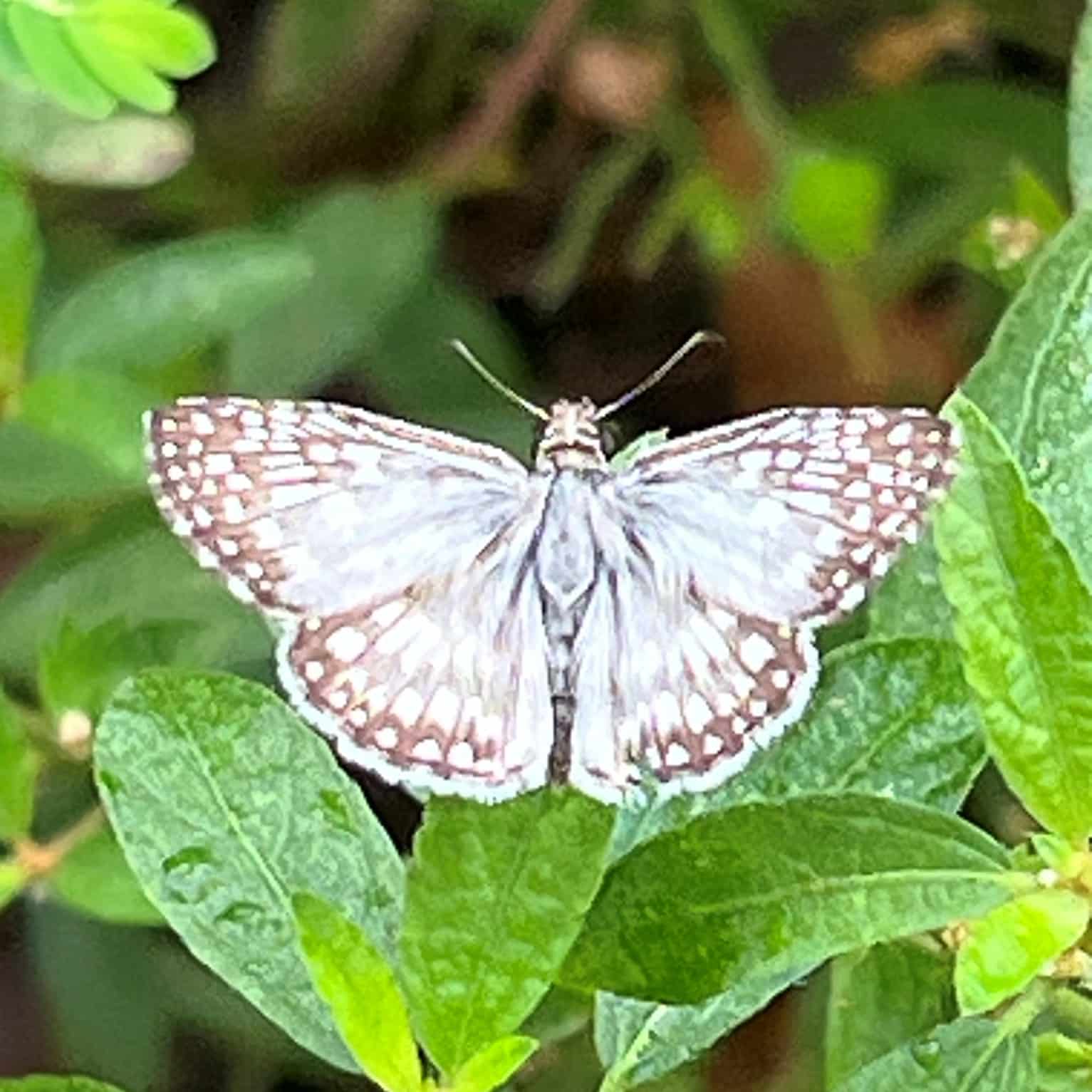We all enjoy watching butterflies flitting about the flowers in our yards. But the adults are not the only life stage of these creatures. Their caterpillars are less often noticed, and not necessarily appreciated, especially if they are chewing on your bedding plants. Monarch Butterfly caterpillars are an exception to any admonishment about chewing up the plant that sustains them. But what about all the other butterflies, skippers, and moths that are pollinating your flowers? What are their caterpillars eating?
The truth is that most caterpillars stay largely out of sight and do relatively little harm to most of the host plants that feed them. There are of course exceptions, as with Monarch caterpillars or Tomato Horn Worms. A single hornworm can defoliate a tomato plant overnight. Adult Horn Worms are called Hawk Moths and are not that bad looking, for a large moth. But for the most part, the caterpillars of the common butterflies that we enjoy have far less impact on their host plants. For many, they feed on a wide variety of plants, thus reducing their overall effect.
Making the connection between the butterflies you see on your flowers and what plants are needed for their caterpillars can help you appreciate the many trees, shrubs, vines, and herbaceous plants that are part of our natural landscape. It can also lead you to choose host plants that fill the needs of any of your favorites, regardless of the plant’s beauty or utility in your landscape. You can feed adults and their young.
One of my favorite small butterflies is the Gray Hairstreak, a common species across North America, occurring in a wide variety of habitats. The contrast in colors and those dainty little protrusions on the edges of its wings make them easy to spot. My most recent encounter was at an active restoration site where I am watching as native and, sadly, non-native plants claim their places in that landscape. That observation led me to ask the question about host plants for this butterfly to see if any were present.
Three of the many host plants reported for Gray Hairstreak are indeed common, including White Clover and Hairy Cowpea, both legumes, and Curly Dock. Hairstreak caterpillars are most common on legumes and mallows. These plants also support other species of caterpillars. Another recent observation of a Tropical Checkered Skipper led to the connection with Arrowleaf Sida, a mallow that is quite common across this site – another connection.

Whether you are curious about what caterpillar any given plant may support or wondering which plants any butterfly may choose to lay their eggs, making these connections can add to the joy of watching butterflies and, hopefully, inspire you to add host plants to your landscape. The Alabama Butterfly Atlas is a handy online reference for learning about these connections. You can search by species of butterflies or common host plants.
And don’t forget the many trees, shrubs, and vines that also feed caterpillars (leaves and stems) and some of your favorite butterflies (flowers). Caterpillars are everywhere, even if you cannot see them!
Hope to see you in our great outdoors!